2025-26 California Budget Overview
Author: Vanessa Cajina, Partner and Lobbyist
OVERVIEW
After two years of deficits, the California budget was released in a stronger position with a projected surplus, though subsequent actions by the federal government have thrown this all into question. For those reasons, Governor Newsom has been cautious in discussing new spending. The full budget is projected at $322.2 billion across agencies and departments, with $228.9 billion coming from the state’s general fund. This minor surplus will be important, as there are risks to state programs and spending that are affected by federal policy decisions.
The bulk of state general fund spending will go to K-12 education ($83 billion), health ($59.5 billion), human services ($23.8 billion), higher education ($23.3 billion), corrections ($13.6 billion), and natural resources ($5.4 billion). Personal income taxes account for almost two-thirds of the general fund, followed by corporate taxes (17.3%) and sales and use taxes (16.1%).
This year’s budget maintains programs and services at previously forecasted levels, and stakeholders will certainly jockey for their interests to be reflected in the final budget, which must be enacted by June 30. We also expect the devastating fires burning in Southern California to drive discussions on climate spending, given uncertainty on how the federal government will respond.
FEDERAL ADMINISTRATION RISK
A key risk in 2025 comes from stated policy changes by the incoming federal administration that could negatively impact California’s economy—especially in the areas of international trade and immigration, as well as in health care. Immigration policies and tariffs of the scale and scope proposed would be highly inflationary and result in labor shortages and higher prices of internationally traded goods, which would subsequently constrain economic output. Potential federal actions create substantial fiscal uncertainty for California particularly given the federal-state funding relationship in major health care programs such as Medi-Cal and the health insurance exchange.
CLIMATE, WATER, ENERGY, AND TRANSPORTATION
The Governor’s budget proposes $2.7 billion as the first year of a multi-year effort to implement the $10 billion voters approved in November 2024 via Proposition 4. This bond, which focuses on climate mitigation, will be a critical target for advocacy efforts this year.
This budget intends to include portions of Prop 4, the climate bond that passed in November, to achieve the budgeted amounts. Specifically, the budget proposes to disburse just over $1 billion of the $3.8 billion slated for water projects in the bond. Some of that amount is anticipated to partially offset General Funds that would have otherwise been required to be dedicated to certain water projects, such as dam safety and water recycling.
The Governor also proposes to develop port upgrades for offshore wind generation, as well as offsetting other investments that include water recycling, state-owned lands stewardship, and dam safety.
The Budget proposes $2.3 million from special funds for the Board to evaluate, develop, and implement the appropriate regulatory changes necessary to authorize the use of E15 in California, upon submission to the California Environmental Policy Council of the written summary and results of the peer review for the multimedia evaluation of E11‑E15 gasoline‑ethanol blends. Allowing an increased blending of Ethanol from 10 percent (E10) to 15 percent (E15) is a potential strategy to augment the existing gasoline supply and reduce gasoline prices.
HEALTH AND HUMAN SERVICES
Medi-Cal, California’s Medicaid program, provides comprehensive health care services at low or no cost to low-income individuals, and other people who qualify due to disability. It is administered by the Department of Health Care Services. The adjusted 2024-25 Medi-Cal budget is $174.6 billion, with $37.6 billion from the General Fund, and the projected 2025-26 budget is $188.1 billion, with $42.1 billion from the General Fund. Medi-Cal will cover 15 million people in 2024-25, and 14.5 million in 2025-26. This is due to federal “unwinding” of continuous coverage that was established during the COVID-19 pandemic, and possibly associated with an improved economy, moving individuals into private coverage or out of income necessity for Medi-Cal.
Proposition 35, passed by voters in November 2024, reauthorizes the Managed Care Organization Tax (MCO Tax) in perpetuity. It specifies use of those tax revenues starting in 2025. The Budget reflects MCO Tax revenue of $7.9 billion in 2024-25, $4.4 billion in 2025-26, and $3.3 billion in 2026-27 to support the Medi-Cal program. This will increase provider rates for primary care, maternal care, and non-specialty mental health services. A stakeholder advisory committee will assist in developing a final spending plan for MCO revenues.
The budget includes $5.3 billion ($967.8 million General Fund, $2.2 billion federal funds, and $2.2 billion special funds and reimbursements) in 2024-25 and $5.1 billion ($727.9 million General Fund, $2.3 billion federal funds, and $2 billion special funds and reimbursements) in 2025-26 for the Department of Public Health (DPH). Additional investments will be directed at Avian Flu preparedness and response, overdose prevention, and public health information technology projects.
STATE ADMINISTRATION AND TAX POLICY
The Governor’s budget proposes an expansion of the Film Tax Credit 4.0 program from $330 million to $750 million in annual credits. As part of the 2023-24 Budget Act, the Film Tax Credit was extended through a 4.0 program for years 2024-25 through 2029-30. This extension provided for $330 million annually in available credits, and allowed for the election of refundable credits to allow taxpayers to recoup refunds over a five-year period.
Beginning with the 2025 tax year, the Governor’s budget proposes to require financial institutions to use a single sales factor apportionment to calculate taxable income allocated to California. Currently, financial institutions use a three-factor apportionment methodology. This change will align financial institutions taxable income apportionment methodology with most other corporations in the state and will benefit companies with a larger physical presence in the state.
Under federal law personal income taxpayers are limited to deducting no more than $10,000 of state and local tax (SALT) payments on their federal return while business entities are able to fully deduct state and local income taxes. The 2021 Budget Act enacted a new pass-through entity elective tax (PTET) allowing taxpayers who have income from pass-through entities to electively pay a tax at the business entity level and receive a state personal income tax credit for the same amount. The PTET is scheduled to sunset after 2025 tax year along with the federal SALT cap. The Governor’s budget proposes to extend the PTET, subject to the federal SALT cap being extended, to ensure continuity for California taxpayers.
HOUSING AND HOMELESSNESS
The Governor’s budget proposes to separate and reorganize the existing Business, Consumer Services, and Housing Agency (BCSH) into two new agencies: the Housing and Homelessness Agency; and the Consumer Protection Agency. According to the Governor’s budget, “more details will be provided in the spring through a Reorganization Plan submitted to the Little Hoover Commission.” The budget makes no cuts or additions to existing appropriations, but does include a $100 million one-time allocation to the Encampment Resolution Fund.
EDUCATION, LABOR, AND EMPLOYMENT
The Governor’s budget includes $5 million General Fund in 2025-26 and ongoing for GovOps to establish a planning and coordinating entity to bring together TK-12 education, higher education and state economic and labor agencies to improve coordination of resources and initiatives across state government in alignment with recommendations from the Master Plan for Career Education.
The Governor’s budget includes $4 million one-time General Fund for the Labor Workforce Development Agency to evaluate how regional coordination models can be expanded to create sustainable forums where educators, workforce training providers, and employers can work to align programs with employer needs.
The Governor’s budget includes $634.3 million one-time General Fund to pay the annual interest payment on the state UI loan balance. The Administration notes that the 2024 Budget Act included $50 million from the Employment Training Fund to pay a portion of the interest in 2025-26, but the fund is unable to support this payment without reduction to existing programs and the payment is not included in the Governor’s budget.
NEXT STEPS
The Legislature will begin their review of the Governor’s budget proposal, with Budget Chairs Senator Scott Wiener and Assemblyman Jesse Gabriel running the process in coordination with Senate President Pro Tempore Mike McGuire and Assembly Speaker Robert Rivas. Subcommittees will convene to vet each proposal under different policy areas, likely starting in February, and going through the spring. Hearings will be formally announced shortly. The Governor will then release a revised budget by May 15, reflecting adjustments for federal uncertainty and April tax receipts. The Governor must approve the final budget by June 30.
Questions?
For questions about the budget, please feel free to reach out to Vanessa Cajina, vcajina@ka-pow.com


